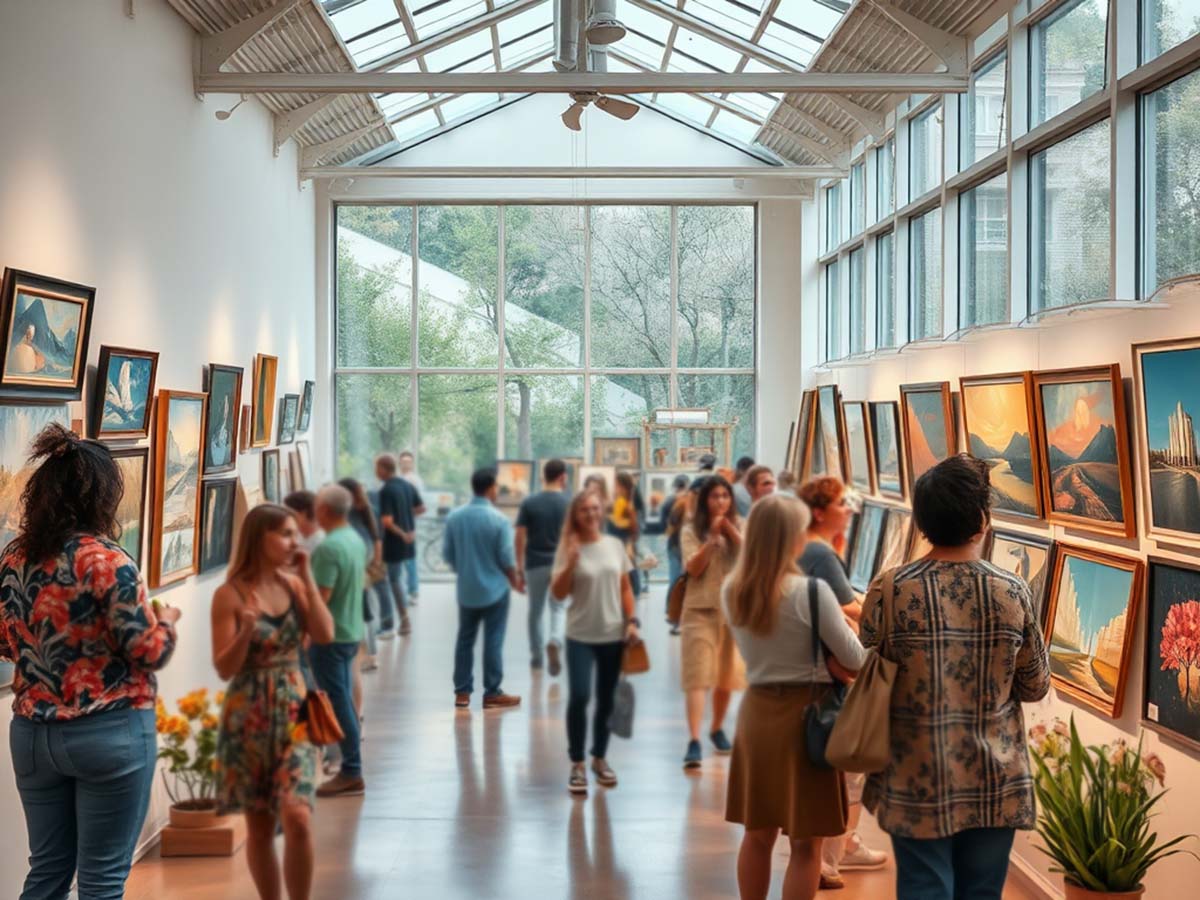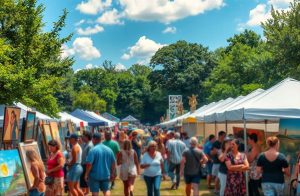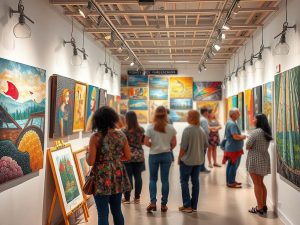
Why Expanding Museums for Local Artists Matters
Across many regions, museums are becoming more active in showcasing local talents. This change is catching attention globally, offering more chances for painters, sculptors, and creators to share their work. It’s not just about art—it’s about culture, community, and giving people from smaller areas access to something meaningful. For too long, large cities have been the center of artistic exhibitions, leaving smaller communities out of the picture. That’s finally starting to shift.
As museums make space for local creators, they build stronger ties between artists and audiences. The result is a more inclusive and engaging cultural experience for everyone—whether you’re an artist, a student, or someone just discovering the power of visual storytelling.
A Larger Space Makes a Big Difference
Art thrives when people participate—whether by creating, viewing, or simply being curious. By giving more room inside museums, local artists finally get to showcase their pieces. This shift opens doors to new styles and voices that may have been left out in the past.
For decades, the spotlight stayed on big names in major cities. Many emerging artists never got a chance to show what they could do. By changing that, museums introduce fresh perspectives and inspire fairness in the art world.
Widening access also encourages community involvement. When museums offer public programs, workshops, and hands-on activities, people engage with art in everyday life. In many places, this has helped youth stay active and away from negative influences, simply by giving them creative outlets close to home.
Global Inspiration from Museum Programs
Different countries are finding ways to support local creators through museum expansion. In parts of Europe, governments and cultural groups often join forces to fund new spaces or renovate old ones. That shared responsibility leads to more room for exhibits and more support for artists.
In Asia, some museums focus on traditional crafts by creating small exhibit zones where artisans demonstrate their process live. Visitors don’t just see the final product—they learn the meaning and method behind it.
Meanwhile, museums in North America often team up with schools and cultural groups. Some lend artwork to classrooms, while others hold free workshops for students. These projects help young learners explore art beyond textbooks.
In South America and Africa, several communities spotlight their indigenous culture by working with researchers and local artists. These exhibits focus on oral traditions, festivals, and regional customs—bringing unique colors and stories to a wider audience.
How Local Economies Benefit
Opening up space for community-based art doesn’t just lift creative spirits—it also supports business. Visitors drawn to these exhibits bring money into local services like food, lodging, and transportation. Tourists often buy handmade items, prints, or keepsakes related to the artwork on display.
As a result, new jobs and small businesses can flourish near museums. In some places, galleries are placed near cafés and local craft shops, creating a full experience for visitors. A strong cultural identity can even become a key reason for tourism, boosting the region’s reputation.
Culture Grows Closer to Home
When artists get a chance to show their work inside respected institutions, the public begins to value these creations more deeply. Local history, traditions, and worldviews come to life in ways people can connect with. Young people often feel inspired to try their hand at art, whether through digital tools or traditional materials.
This connection helps preserve heritage—songs, dances, weaving, and storytelling—that might otherwise fade. As audiences grow more curious, they develop a better sense of pride in their roots and are more likely to pass them on.
A Place for Learning, Not Just Viewing
Museums aren’t only for looking—they’re also for learning. When they expand, there’s more room for interactive programs. These can include seminars, small classes, or hands-on sessions for making art.
Teachers love bringing students on field trips to see real artworks up close. What they usually find in books or online becomes something they can experience in person. That kind of exposure helps children become more interested in art and might even inspire future careers.
Parents benefit too. Instead of traveling far, they can visit nearby exhibits with their families. When museums open their doors to local communities, they make art easier to reach and appreciate.
Building Stronger Partnerships
Success doesn’t rely on space alone. Museums grow stronger when they work with local governments, private groups, and universities. These partnerships make it easier to fund events, train staff, and host meaningful exhibits.
In some places, regular meetings between museum leaders and community reps help solve practical problems like materials, space, and publicity. Elsewhere, large companies sponsor shows or donate resources as part of their outreach programs.
This kind of teamwork builds stronger links between business and culture, creating mutual support that benefits everyone involved.
Art That Bridges Cultures
Art is one of the most powerful ways to connect people from different backgrounds. When museums expand, they make room for international exhibits and visiting artists. This leads to new exchanges of ideas and experiences.
Sometimes, artist groups swap exhibitions across countries—sharing their work and learning from others. These global connections are especially valuable for Filipino artists, whose creations could find new audiences abroad.
By participating in such exchanges, artists open new paths for growth, while also promoting Filipino identity on the world stage.
True Support Goes Beyond Space
Physical space is important, but so is steady support. Museums thrive when they have regular programs like exhibitions, open houses, and workshops. These efforts keep people coming back and help build trust with potential partners and sponsors.
When support feels genuine, artists become more motivated. They contribute more work and feel part of something that values their creativity. Whether they’re new or experienced, having a platform makes a big difference.
This also helps build friendships among artists, institutions, businesses, and everyday visitors. It’s this sense of shared purpose that gives a community its unique artistic spirit.
Practical Moves That Make an Impact
Here are a few ideas to help museums and communities move forward:
- Keep Communication Open: Museums should regularly consult with artists, trainers, and public leaders.
- Use Digital Tools: Sharing exhibits online helps people in remote areas enjoy the experience too.
- Design Creative Programs: Rotate themes based on festivals or local history for deeper engagement.
- Grow the Network: Connect with other galleries locally and internationally for knowledge exchange.
Even small efforts like these can make museums more inclusive and better connected. Technology, in particular, allows younger generations to engage more easily with creative content.
Showing the World What Filipino Culture Offers
Museum expansion also creates a chance to highlight Filipino art to global visitors. By opening spaces for local exhibitions, we can attract tourists who want to learn about regional culture. This not only boosts appreciation but also encourages collaboration.
When foreign guests see our traditional crafts and modern works, they gain respect for our culture. At the same time, local artists learn from international peers, building skills and growing their network.
This helps art grow into something shared by everyone—no matter their background or resources.
A Boost for the Region’s Identity
As museums earn more recognition, they begin to appear in blogs, magazines, and travel sites. That attention draws even more visitors and strengthens the region’s image as a cultural destination.
Being known for supporting diverse and creative art shows that the region is ready for thoughtful progress. Over time, it can even host international fairs or art events, leading to new investments and training programs.
Other areas may follow this example, realizing that supporting museums is a smart way to build stronger communities.
Looking Ahead with Confidence
Cultural centers like museums have a big role in encouraging understanding and respect. By creating more space for local artists, they help people access the richness of artistic expression. This sets a strong foundation for future artists and audiences to grow together.
Partnerships across tourism, agriculture, and education could add even more value. Long-term projects might include free art lessons for youth or new research hubs to study materials and methods.
Some museums are even blending research with exhibitions to give visitors a deeper look into how pieces are made and why they matter.
Supporting the Next Generation
As new technology shapes creative work, more young people are exploring digital art, mixed media, and virtual tools. Giving these styles a space in museums encourages them to keep creating.
At the same time, traditional art still deserves a place. Balancing both modern and classic styles ensures that all voices are heard and appreciated.
When young people see that their ideas matter, they feel encouraged to take art seriously—not just as a hobby, but as a possible career and a way to contribute.
Museums for Everyone
Some think museums are only for the rich or for scholars. That shouldn’t be the case. Expanded spaces allow more people to visit comfortably. Some museums even offer free or discounted admission for locals, students, or older visitors.
This makes museums feel more welcoming. People start to see them as places where they belong. That shift helps build stronger community ties and makes art feel more personal.
Reaching Farther with New Tools
Social media, livestreams, and online tours are helping museums reach beyond their walls. Even those far away can now watch events live, ask questions, and feel included in the experience.
Training museum staff to use these platforms makes outreach more effective—especially to younger audiences. Announcing exhibits, sharing stories, or hosting live Q&As can bring in new interest.
Combining these tools with physical expansion helps build a strong, flexible cultural center that meets people where they are.
Shared Effort, Shared Meaning
Museum expansion isn’t just about making room—it’s about bringing people together. When curators listen to students, elders, women, indigenous people, and others, it creates a more complete experience.
This inclusive approach ensures that programs reflect real community needs. Whether it’s quiet hours for seniors or interactive displays for teens, everyone finds something meaningful.
As people feel heard, they become more engaged. Art stops being something distant and becomes part of their everyday identity.
A Brighter Future for Art and Culture
As time goes on, the role of museums in building understanding and pride will only grow. When they open their doors wider, they open hearts and minds, too. Supporting local creativity brings us closer to a world where art is part of everyone’s life—not just a select few.
By focusing on connection, learning, and inclusion, expanded museums can lead communities toward lasting cultural and creative growth.

